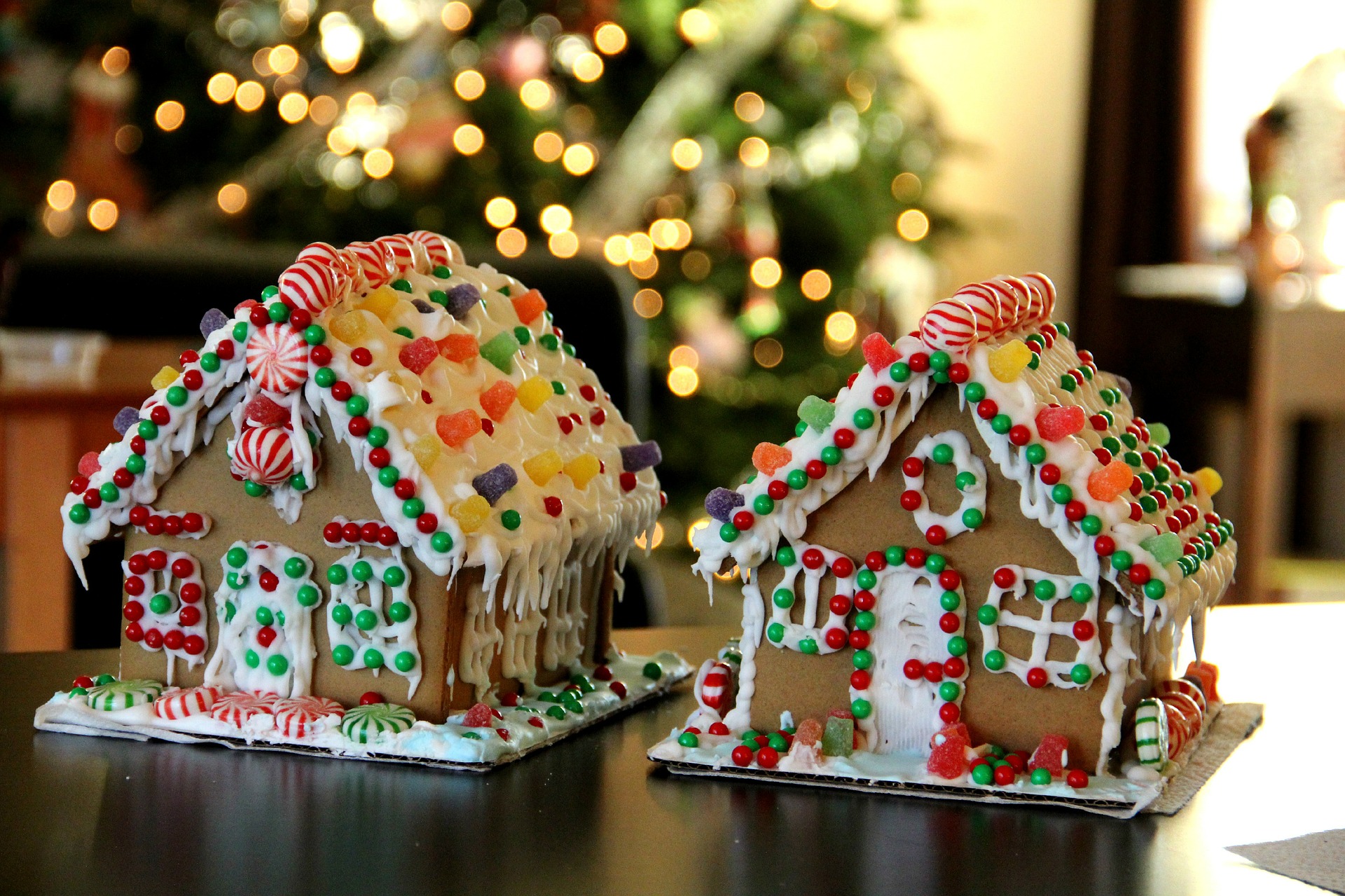We learned in the history of Christmas cookies that gingerbread was one of the first cookies to be associated with Christmas.
But what about gingerbread houses, specifically?
Gingerbread has a long history, dating back to Medieval Europe. Armenian monk Gregory of Nicopolis introduced the food item to Europe in 992. He then lived in the French town of Pithiviers, teaching gingerbread cooking to priests and Christians until his death.
Indeed, from the late 900s to the 1200s, gingerbread was primarily used for religious purposes, being molded into images of saints and other significant religious icons. Monasteries were one of the first places to sell gingerbread; it was also sold outside church or at other religious events.
Gingerbread was not only tasty, but it also had elements that helped preserve the bread – this is especially true for German-style gingerbread, which has a harder consistency than the softer type. Of course, the tougher the bread the better the house will stand up – but houses still hadn’t come about just yet.
Decorating gingerbread in one form or another spread across Europe during the 13th, 14th, and 15th centuries; it became something of an art form. During Queen Elizabeth I’s reign (1530s to early 1600s) she reportedly came up with the concept of the gingerbread man. She molded gingerbread into people-shapes, meant to look like her royal guests of honor.
In Germany in 1419 a Gingerbread Guild was established. Gingerbread making was restricted to only the guild in that area, except for at Christmastime and Easter, when common folk were allowed to make their own gingerbread.
By the 1700s, gingerbread was more widely available. But it wasn’t until the early 1800s the concept of gingerbread houses really took off.
For some time, gingerbread had been decorated and displayed in shop windows – it is conceivable that some of these adornments may have resembled houses. However, it is the Grimms Brothers Hansel and Gretel of 1812 that really conceptualized gingerbread houses.
As the majority of us know, in the famed story, two children are abandoned in a forest and they come upon a house made entirely of gingerbread and decorated with sugar and icing and candy and treats. Of course, this is just to entice the siblings to come in where a witch is waiting to eat them.
After the story debuted, German bakers began creating gingerbread houses. With gingerbread already associated with Christmas and Christianity, it didn’t take long for the houses to follow suit. German settlers in Pennsylvania brought the tradition with them to America.
Today, there are gingerbread house competitions, and the houses don’t even necessarily have to look like houses anymore. But most folks don’t compete with their creations – they just enjoy them at home with loved ones.
